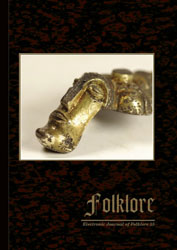Archaeology and Ritual: A Case Study on Traces of Ritualisation in Archaeological Remains from Lindängelund, Southern Sweden
Archaeology and Ritual: A Case Study on Traces of Ritualisation in Archaeological Remains from Lindängelund, Southern Sweden
Author(s): Anne CarlieSubject(s): Customs / Folklore
Published by: Eesti Kirjandusmuuseum
Keywords: archaeology; Neolithic Era; Early Iron Age; ritualisation strategies; ritual killings and feasting
Summary/Abstract: The aim of this article is to discuss traces of ritualised actions in archaeological material. The basis for the discussion is the archaeological site Lindängelund, near Malmö, in southern Sweden, where recent excavations have revealed a large settlement complex dating from Neolithic, Iron Age and Early Medieval Times. I focus here on the period 150 BC–AD 300, in which traces of ritualised actions stand out in the archaeological record, represented by wooden poles/artefacts, assemblages of animal bones, sherds of pottery vessels, etc. It is suggested that a small wetland area with wells/waterholes containing ritual waste, lying next to the Iron Age village, was used as a ceremonial place for ritual feasting. Later on in the same period, as traces of ritualisation decline in the archaeological record at the central place, similar deposits of ritual waste have been found in private wells on big farm sites. This shift in the ritualisation strategies is suggested to reflect a strengthening social competition between the leading families in the village.
Journal: Folklore: Electronic Journal of Folklore
- Issue Year: 2013
- Issue No: 55
- Page Range: 49-68
- Page Count: 20
- Language: English

